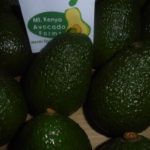 Kenya has for a long time relied on its suitable climate to grow avocados most of the year. It is also notable that the country did not export the produce in early 2018 due to a locally enforced ban that was lifted recently. The reason has been immature fruit harvesting and fruits that were not all uniform alongside diminishing supplies for the local consumers. However, the country still has a potential to export more than the current 16,000 metric tons of the 200,000 metric tons it produces annually.
Kenya has for a long time relied on its suitable climate to grow avocados most of the year. It is also notable that the country did not export the produce in early 2018 due to a locally enforced ban that was lifted recently. The reason has been immature fruit harvesting and fruits that were not all uniform alongside diminishing supplies for the local consumers. However, the country still has a potential to export more than the current 16,000 metric tons of the 200,000 metric tons it produces annually.
One of the important things in the growth of avocado is shape. All fruits in a package should be ideally size 12 and in the same medium shape. The fruit should be firm to the touch and contain a dry matter of at least 23 percent.
In Europe, the dry content goes even lower for two main varieties. Imports of Hass must meet a minimum dry content matter of 21% while fuerte must be at least 20% in dry content. The 23% minimum is for avocados that are required to ripen upon arrival in the import destination. In the US market, a 21 percent dry matter content level and 12 percent in oil content is the indicator of export-quality fruits. Dry matter tests are more reliable and easier than oil tests in most of the import markets.
The packing of avocados is an essential mark of its acceptability abroad. Labeling is usually done on the wrapping or carton shipping the produce. A packet usually should have a traceability code, the source of the fruit, the fruit’s variety and an optional certificate by the crop inspector. Locally, the Kenya Plant Health Inspectorate Services (KePHIS) takes care of inspection on minimum residual levels which should be less than 0.01%.
Avocado production in Kenya is quite conducive as unlike other popular sources like south America, there is no haphazard weather. Winds, hurricanes and torrential rain can easily damage the fruit. In the country, the two main rain seasons are stable. The first one runs from March through May. It coincides with the fuerte season which begins in late February and the rains do not affect quality at harvest time. The short rains season is between October and November and it coincides with the Hass season which ends December. It is notable that neither weather pattern affects the crop.
The main market for Kenya is the European Union which in itself is the second biggest export destination of worldwide avocados after the United States. Kenya, Peru, Chile and Mexico account for 400,000 tons that go into Europe while the remaining 40,000 come from Israel. This was the case in 2017 before the short-term ban in Kenya happened. The biggest importing destination in Europe is France.
Hass is the most popular variety in Kenya’s export destination. The reason is its ready-to-consume nature. It does not have a huge reseller market locally as other green varieties are predominant. Dormant varieties like Hardy and Simmonds are popular in local markets because they thrive in lowlands of below 1000 meters altitude as long as the soil has no salinity. Guatemalan Hass and Mexican Puebla grow at altitudes of over 1000 to 2500 meters in Central and Eastern Kenya. In actual terms, most avocados grow in areas of Kenya between 1200 and 1800 meters.
Indeed, Kenya avocados may continue to do well in export destinations if they consider the salient points. The country has one major advantage over the rest of the export market in terms of seasonality. While the bulk comes from Peru, the season in this part of the world ends quite early which leaves a gap that Kenya’s year-round avocados can fill. With more professionalism at letting the fruits mature and picking them when they reach uniform size, the country can take perfect advantage of this export window.

